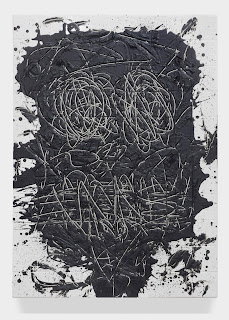I recently reread a series of essays, Black Bibliophiles and Collectors: Preservers of Black History (1990), resulting from the 1983 Black Bibliophiles and Collectors Symposium at Howard University. In this collection of essays, I am continually drawn to an essay by Bettye Collier-Thomas, Present Programs and Future Needs. Collier-Thomas posed three essential questions that were being addressed by historians, archivists, and collectors interested in documenting the black experience in America. Those questions are still pertinent today and follow:
- What areas of black life and history have not been documented and are not now being documented?
- What types of materials are necessary to document neglected areas of black life and history?
- What methodology is necessary to identify and collect these materials?
If
you think that book collecting is the exclusive domain of fusty old
professorial types, it might be time for another look. Bibliophilia has
found new cachet thanks to places like the Las Vegas outpost of Bauman
Rare Books in the Shoppes at the Palazzo, - See more at:
http://accent.chubb.com/prelude-book-collecting#sthash.jAvqixmG.dpuf
If
you think that book collecting is the exclusive domain of fusty old
professorial types, it might be time for another look. Bibliophilia has
found new cachet thanks to places like the Las Vegas outpost of Bauman
Rare Books in the Shoppes at the Palazzo, - See more at:
http://accent.chubb.com/prelude-book-collecting#sthash.jAvqixmG.dpuf
Collecting has been my on-going passion for years. The only changes in my collecting habits relate to what items may have had my utmost attention at any given moment. Although there may have been some interest in various collecting categories, I have consistently found immense joy in collecting fine art, and books, as well as ephemera to support that art. Collecting brings me great joy; the discovery, exploration, and eventual
reading of these art gems have brought a richness to my life that has been unimaginable. Because I work with a personal budget, I have had to
strategically plan, and assess what essentially must be included in the
collection. Monographs, exhibition catalogues, brochures, and any print
material must pass self-imposed guidelines, and fit into a collection policy plan.
For over 20 years, I have been very committed to and strongly believed in
collecting and preserving African American print materials focusing on black
art. Stated quite simply, I collect visual art print material because in my
estimation it serves as a key element in identifying and documenting African
American artists and highlighting the
historical role these artists have played within the larger field of American
art. Historically, there has been a gross lack of documentation in the visual
arts, and I refer to this lack of documentation, as compared to many other
areas of black history and culture, as a weak link that needs to be
strengthened.
This link will lead you to a small portion of what has been collected to date. This simply represents a small percentage of my existing collection: inventory
In upcoming posts, I will continue this discussion, focusing on the trend of book collecting today; the publishing trends in the area of the visual arts; why collect; and what to collect. Who were some of the historical bibliophiles? Who are some of the black bibliophiles of the 21st and what are they collecting? Stay tune as I venture into further discussions into this largely neglected collecting field of print materials relating to black art/artists.

























